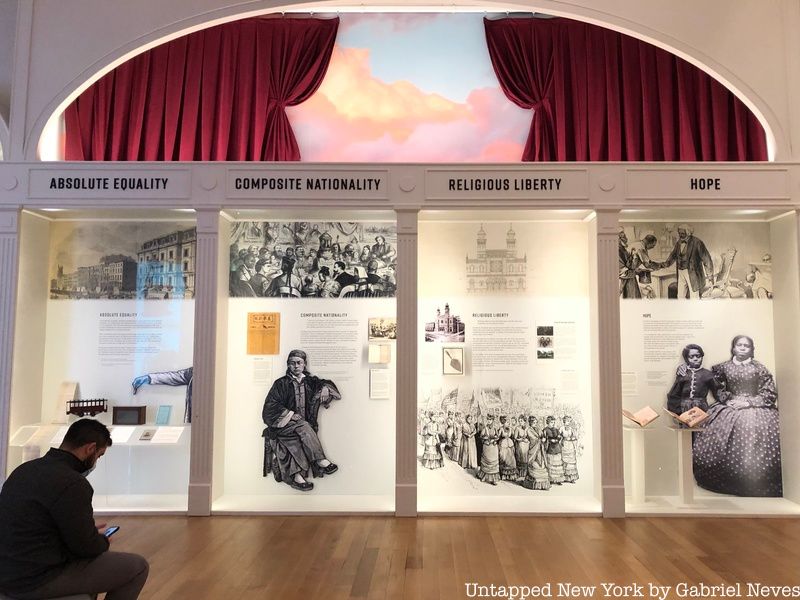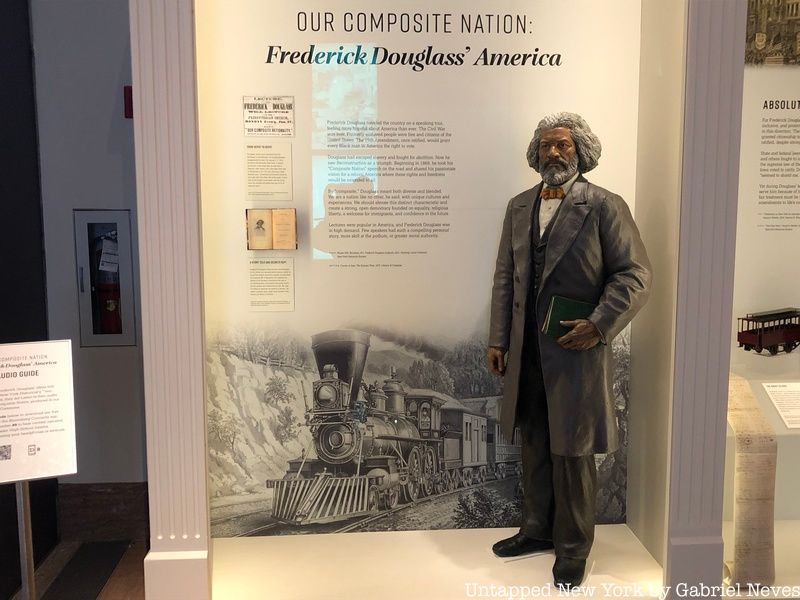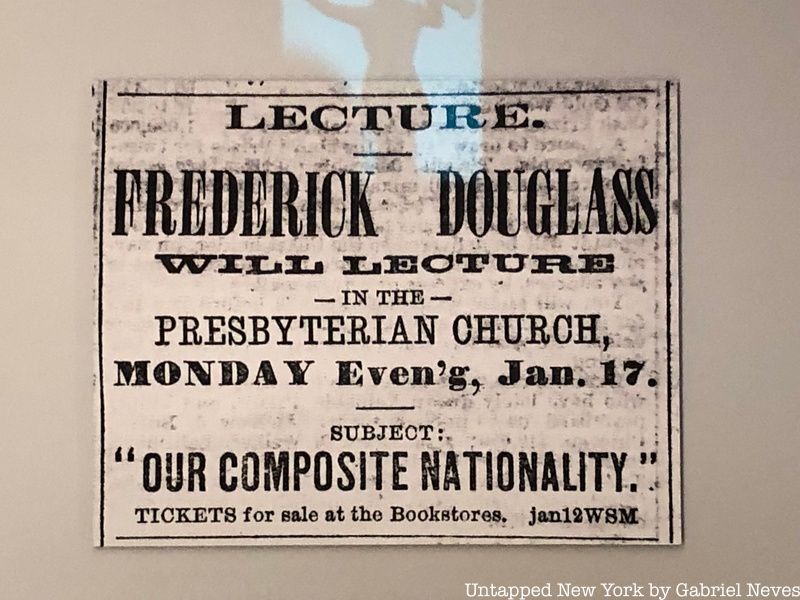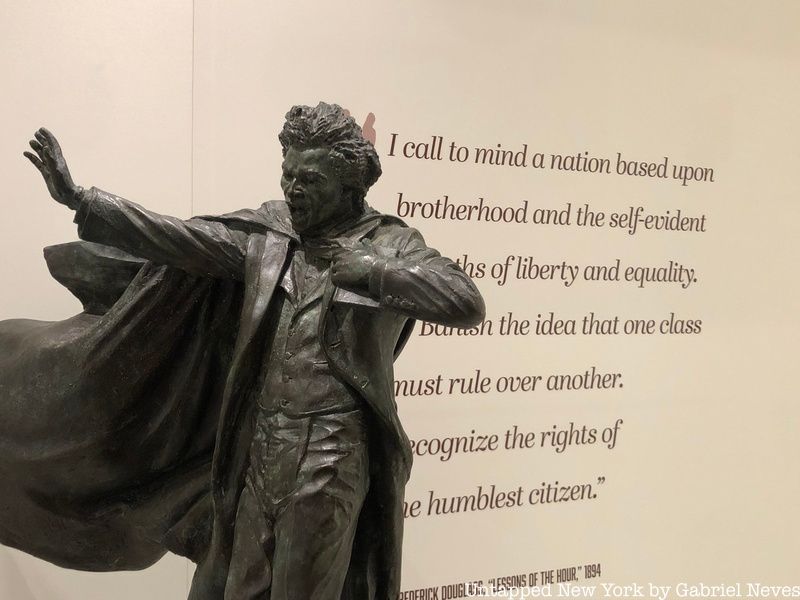Exploring New York’s Industrial Past in "Cathedrals of Industry"
Join photographer Michael L. Horowitz for a journey through 50 years of photographs!


In light of Black History Month, the New York Historical Society & Library has just debuted a new exhibit called “Our Composite Nation: Frederick Douglass’ America”. The museum and library is located on the Upper West Side, just across the street from the Museum of Natural History. The installation highlights the importance of the “Our Composite Nation” speech written by the famed abolitionist and goes into depth on what his vision of equality in America would look like.
The collection of artifacts and analyses is designed around the work of Scholar Trustee David Blight and his Pulitzer Prize-nominated book Frederick Douglass: Prophet of Freedom. It takes up a small portion of the museum’s first floor and is divided into four visual sections: Absolute Equality, Composite Nationality, Religious Liberty, and Hope. Each section ties elements of Douglass’s “Our Composite Nation” speech to many of the core social issues in America during the 19th century. The impact of the 15th Amendment, the influx of Chinese immigrants, freedom to practice religion, and fear to embrace racial backgrounds were some core issues of the time that the exhibit touches on.

Frederick Douglass began touring around a large part of the United States in 1869 to advocate for social justice and to present his speech to the public. His aim was to share his desire for a more unified nation that would be “composite,” meaning “diverse and blended.” Douglass held a firm belief that America was a nation with a certain “mission” to accomplish. Many of his statements pointed towards the misrepresentation of certain racial and ethnic groups in the United States, despite the fact that the country was considered a land of opportunity, equality, and freedom.
Powerful speaking skills and personal experience as a slave in Maryland allowed him to captivate his audiences and effectively deliver his inspiring theories. He spent a great portion of his life supporting minority populations in the United States and did so until his death in 1895. Despite the increasing effects of Jim Crow laws during Reconstruction, Douglass’ efforts had a profound impact on American society in the generations to follow.

“It is a suitable time to look back at Frederick Douglass, who had lived through maybe some of the darkest experiences that America had to offer,” Marci Reaven, Vice President of History Exhibits at the New York Historical Society, told Untapped New York, explaining the motivation behind the “Our Composite Nation” collection and why it’s so significant in the world today. “He truly believed that the United States and the people who lived here could reinvent themselves and base their future on equality and create a world in which everybody belonged and everybody was welcomed.”

Douglass’s compelling imagination and desire for change resonated with Reaven, serving as an example of how modern society should approach social justice issues and continue its push toward a more equal America.
One of the aspects of working on the exhibit that stood out most to Reaven was Douglass’ message of hope for the people of the United States. Before putting the collection together with her colleagues, she knew very little about his efforts beyond his time as a slave before and during the Civil War. According to Reaven, people “know more about Frederick Douglass as an abolitionist” rather than as a symbol of social reform and hope. “Our Composite Nation” gives the public access to a more complete version of who Frederick Douglass was and serves as a reminder of how powerful the human race can be if we put down our hate and pride.

On March 18th at 5 p.m., Untapped New York Insiders are invited to a docent-led guided tour of “Our Composite Nation: Frederick Douglass’ America” at the New York Historical Society. Participants will learn about Douglass’s “Composite Nation” speech and speaking tour in the Northeast and Upper Midwest, explore the transformative years of Reconstruction or the “Second Founding” when massive changes were being made to the US Constitution, and discover Frederick Douglass’ life as a formerly enslaved person, as a respected orator and as a leader in the abolitionist movement. This event is free for Untapped New York Insiders. If you’re not a member, join now (and get your first month free with the code JOINUS).
Next, read about some black history sites in NYC!
Subscribe to our newsletter